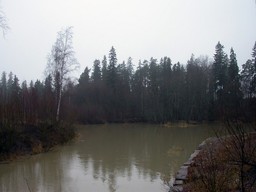8. Erosion
Contents
8.1 Exogenous processes
 In the previous two chapters, we have examined how different internal processes modify and transform the surface of planet Earth. Now, we will turn our focus to the various external processes that also influence the geography of our planet.
In the previous two chapters, we have examined how different internal processes modify and transform the surface of planet Earth. Now, we will turn our focus to the various external processes that also influence the geography of our planet.
Exogenous processes are fuelled by the energy that is radiates to planet Earth from the Sun. Exogenous processes transform landscapes of our planet by wearing down its surface, transporting loose substances, and by piling up these materials in different places. The result of exogenous processes is the wearing down of Earth's surface. This phenomenon is known as erosion. The most significant sources of erosion are flowing water, ice, waves and the wind. In this chapter, we will examine the ways in which these processes transform the surface of the Earth.
Solid rock can also wear down and break. This process is called weathering. It will be discussed in the following chapter.
8.2 The rock cycle
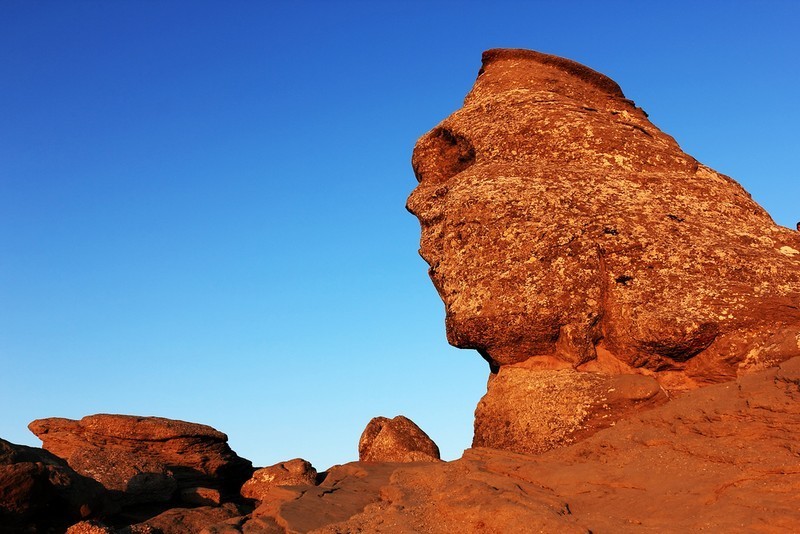 All rock material found on planet Earth is in the middle of constant, albeit slow, motion. Two phenomena affect this process known as the rock cycle: weathering and erosion.
All rock material found on planet Earth is in the middle of constant, albeit slow, motion. Two phenomena affect this process known as the rock cycle: weathering and erosion.Depending on external conditions, the rock cycle can move either very slowly or quite rapidly. The effects of this cyclical process are visible everywhere on planet Earth.
Weathering is a term that means the breaking down of rocks, stones, or minerals. As a result of weathering, the rocky surfaces our planet wear down and diminish gradually over the course of millennia.
The picture on the right shows a rock that has gained a face-like appearance as the result of weathering.
Erosion is a term that means the wearing down of rock and soil. Erosion is caused by flowing water, waves, the wind and glacial movement. These forces of erosion also transport and pile up the loose materials that they create.
For example, the flowing water of a river wears down the riverbed, transports the loose material and piles it up near the mouth of the river, creating a delta.

The sandstone arch has been eroded by wind.
8.3 Flowing water
 Flowing water is one of the most significant and visually striking forces of erosion. Rivers transport a great amount of rock material into the sea.
Flowing water is one of the most significant and visually striking forces of erosion. Rivers transport a great amount of rock material into the sea.
Young rivers flow at great speeds. As a result of this, they cause a lot erosion at the bottom of the riverbed. The flowing force of a young river can even move large boulders downstream.
Young and fast-flowing rivers are mostly found in mountainous regions. In these areas, the swift river has often eroded its channel into a steep V-valley.
Over the course of millennia, rivers can also form deep canyons.
8.4 Rivers meander on flat plains
When running through low flatland plains, rivers begin to meander. Meandering is caused by slow flow speeds, in which the erosive force of the river wears down its outer curves more than its inner curves. This results in side erosion. Over time, loose material can pile up on the river's inside curves, forming sandbanks.
Sometimes, a river can wear down its outer curve so vigorously that its embankment erodes away completely. As a result, the river will cut through the curve, creating a new, straight channel through the terrain. When this happens, curves of the former river can be separated from the new, straighter river, forming an oxbow lake.
8.5 A delta is formed at the mouth of a river
 When the flow of a river slows down, the loose soil carried by the water begins to pile up on the bottom of the riverbed. As a result, the river becomes shallower. This can cause rivers to flood.
When the flow of a river slows down, the loose soil carried by the water begins to pile up on the bottom of the riverbed. As a result, the river becomes shallower. This can cause rivers to flood. When water from a river floods over its banks, the loose, rich silt that is carried by the water also spreads to the surrounding plains. As a result, the soil of the surrounding region gains nutrients and becomes more suitable for agriculture. This is why people have inhabited flood plains since the dawn of history.
When a river meets the sea, its flow stops. All the materials that the river water has carried settle on the bottom of the seashore, forming a delta.
Gradually, the materials carried by the river to the delta form layers. These layers slowly accumulate and grow, until they finally reach the water's surface. This results in the formation of islands and sandbanks, as the shoreline moves further towards the sea.
River deltas, like flood plains, are very suitable for agriculture due to the high nutrient concentration of their soil.
A satellite image: The delta of the river Danube is the second largest in Europe. The Danube carries large amounts of earth to the Black Sea.
Gallery: River erosion
8.6 Glacial movement

When the winter causes the climate cool down in mountainous regions, rainfall begins to come down in the form of snow. The snow piles up on top of old layers of ice that have not melted during the summer on the high mountain peaks. As the snow accumulates at a greater rate than it melts, the ice layer on the mountain peak grows thicker every year. Finally, the weight of the snow compresses the lowest layers into ice. Slowly, the ice begins to move down the slope of the mountain, accelerated by water from melting snow.
As the ice moves down the slope of a mountain, it can accumulate crushed rock materials and carry them down with itself. Rock material that has been carried by ice from one place to another is referred to as glacial till.
When ice moves down the slope, it and the glacial till it carries erode the slope of the mountain. This results in the formation of smooth glaciated rock and U-shaped valleys.

Glaciated rock is common in Finland. It has been smoothed down by glacial movement.
8.7 Forces of the shore
 Shores and beaches are eroded by waves, tides and ice. When combined, these three forces transform shorelines over time.
Shores and beaches are eroded by waves, tides and ice. When combined, these three forces transform shorelines over time.
The stronger the wind, the larger the waves caused by it are. When waves beat the foot of a rocky shore, a cavity begins to form as the result of erosion. When this cavity grows larger, the rock that previously hung on top of it will eventually crash down. The result is a steep, rocky bank that gradually moves inland as a result of erosion.
Sometimes, waves can erode rocky shores by creating magnificent caverns and arches. When these eventually fall down, the result is a series of rauks, which are columns of rock that rise up from the sea.
Waves do not always beat against rock. On shallow beaches, waves create beach plateaus by carrying rock material near the shore. Sometimes, the currents of the sea can move some of the rock material away from the beach, creating sandbanks.
When waters freeze during the winter, the ice can be moved by wind or currents towards the shore. When this happens, different materials can pile up near the shore. On the shores of large oceans, the landscapes of beaches can also be transformed by tides.
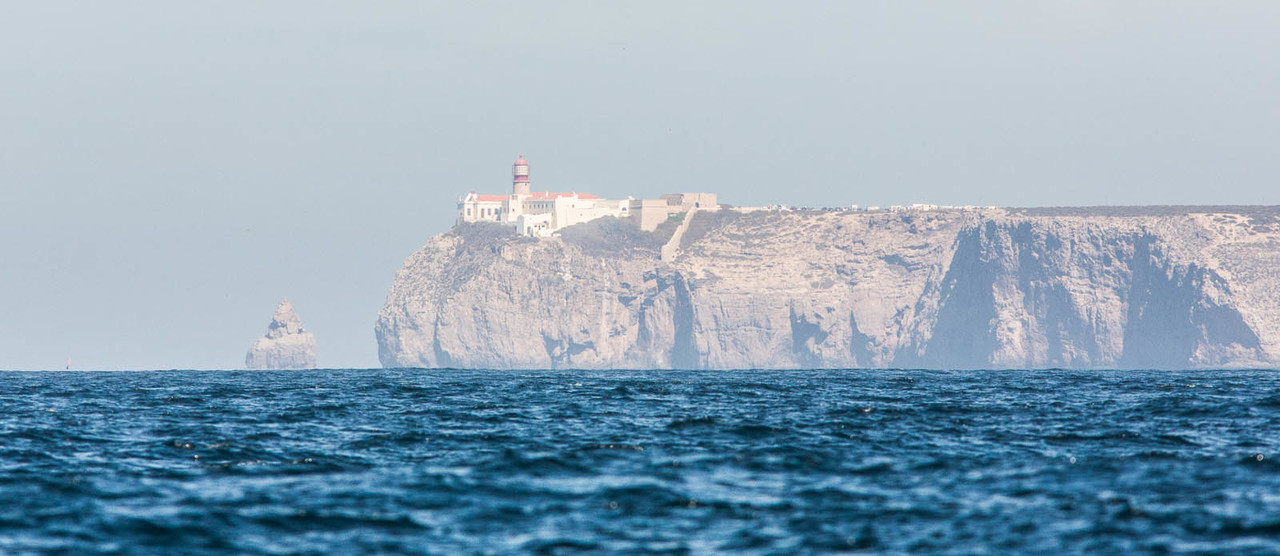
A rauk has formed on the shore near the Cabo de São Vicente lighthouse in Portugal.
8.8 Wind
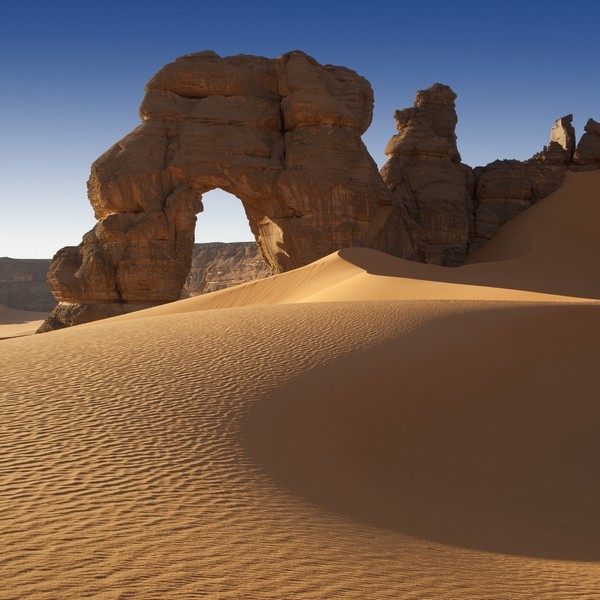 The wind is a force of erosion that wears down the surface of the Earth especially in regions where vegetation is scarce.
The wind is a force of erosion that wears down the surface of the Earth especially in regions where vegetation is scarce.
Wind can carry fine materials, such as sand, from one place to another. When the speed of the wind decreases, these materials can pile up and form dunes. Dunes are especially common in deserts and beaches.
Fine fertile ground dust or loess is a byproduct of wind. This material is picked up from deserts and the border zones of glacial areas. The wind carries this material for thousands of kilometers, which results in the material accumulating at a certain location. Loess areas can be found in Russia, Ukraine and Germany.
Wind can also erode rock by wearing down the lower surfaces of cliffs. Wind only erodes the lower parts of cliffs because it can only can carry particles like sand at low altitudes.
Rock pedestals can be formed as the result of wind erosion. Their large caps and thin stems resemble mushrooms, which is why these formations are sometimes called mushroom rocks.
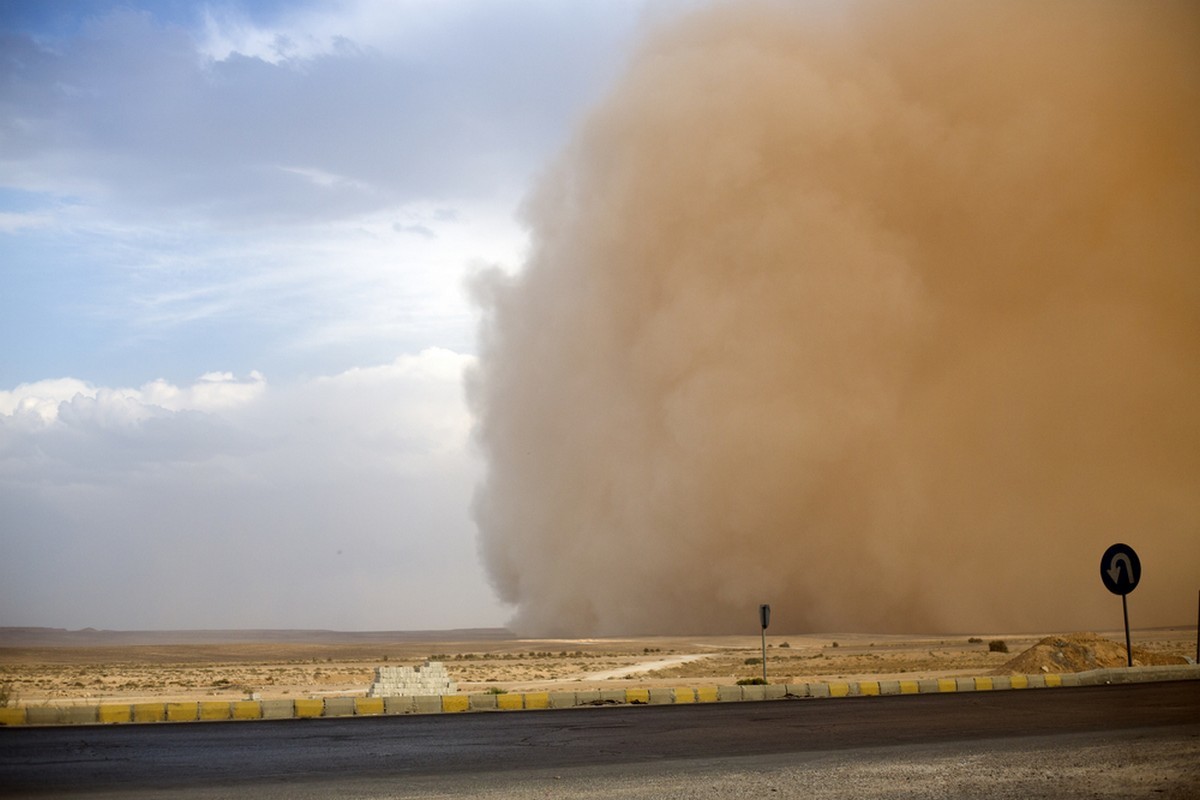 A sand storm transports sand and other fine materials. Sand storms occasionally cause problems near desert regions.
A sand storm transports sand and other fine materials. Sand storms occasionally cause problems near desert regions.
Summary
 Exogenous processes gain their energy from the Sun. They transform the Earth by wearing down its surface, transporting loose material and by piling up this material in different locations.
Exogenous processes gain their energy from the Sun. They transform the Earth by wearing down its surface, transporting loose material and by piling up this material in different locations.- The four most important forces of erosion are flowing water, ice, waves, and the wind.
- Flowing water erodes the river's curves and carries loose material with itself, creating meanders, sandbanks, and deltas.
- Ice and the glacial till it carries can erode rocky surfaces, forming glacialized rocks and U-shaped valleys.
- Waves, ice and wind transform the seashore, forming steep banks, shallow beaches and other formations such as rauks.
- Wind can carry sand and other materials, forming loess, dunes and rock pedestals.
- Key words: exogenous processes, erosion, weathering, U-valley, V-valley, delta, dune.
